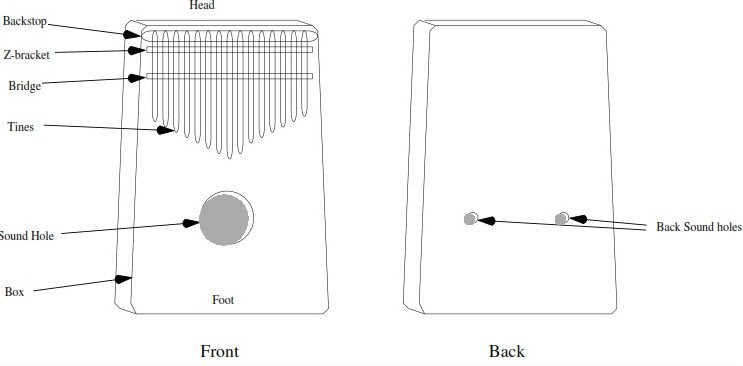Today in this post, I am going to present you what is a Kalimba and explain how it works.
The kalimba is a very unique instrument. It has the rhythm capabilities of a percussion and the soothing calmness of a stringed instrument.
Although it's more common in some parts, anyone can easily learn it and incorporate it into their music.
It's actually fun to play, and you don't need too much time to start playing your favorite tunes.
This article throws light on what the kalimba is and why it is such an amazing musical instrument.
What is Kalimba?
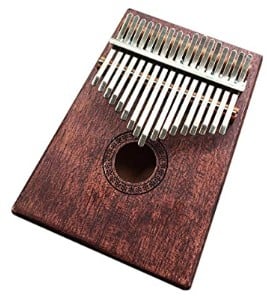
The Kalimba has its origins in the family of plucked pianos from Africa. In some parts of Africa, these thumb pianos are called Mbira.
The inventor of the Kalimba specifically used the mbira as his inspiration. The Kalimba, invented in the 1960s, is a result of Hugh Tracey's trip to Africa.
He took an interest in the thumb pianos he found in Zimbabwe. From there he created the Kalimba as it is known around the world today.
The kalimba typically consists of two major parts; the wooden soundbox and the metal keys.
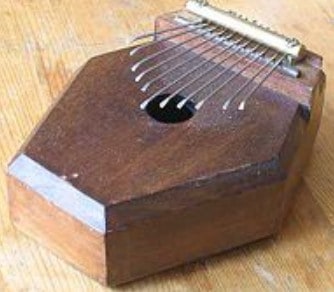
The functions of the wooden soundbox and that of the metal keys can be likened to those of an acoustic guitar's strings and its wood.
Like the acoustic guitar, the Kalimba has a soundhole in front that plays an important role in defining its sound.
Some Kalimbas have two additional soundholes on the rear. These soundholes give your music the vibrato effect. It sounds really good when used right.
The other important part of this instrument is the keys. The keys are typically made of steel, and they're the parts that you pluck to make the instrument sound, like the strings on a guitar.
Plucking appears to be the primary way of playing the Kalimba. However, when you look closer, it's more of pressing and releasing the tongues. The actual plucking can be used to achieve a muted sound effect.
Speaking of effects, you can add the wah-wah flavor to your sound by covering and releasing the soundhole in front of the soundbox. It sounds really good when you combine this with the vibrato effect.
A kalimba is usually one of three major types;
- Celeste
- Treble
- Alto
Celeste and Alto kalimbas are less common than Treble.
Celeste kalimbas only have a soundboard and not a soundbox, so there's no soundhole. The sound is crisp and sharp. They have 17 notes. Alto kalimbas, on the other hand, have 15 notes.
Treble kalimbas which are the most common, feature a soundbox and soundhole in front.
This gives the Treble kalimba better resonance than the rest. This makes the Treble kalimba to have a soothing sound. Kalimbas like this are good for solo performances,
Parts of the Kalimba
The parts that you will find on most Kalimbas include the Head, Backstop, Z-Bracket, Bridge, Tines, Soundhole, Soundbox, and Back soundholes
The backstop, Z-bracket and bridge help to keep the tines in place. They hold the tines tight when you're playing.
They also serve as guide points when you're tuning the Kalimba. You can use the relative length between the Z-bracket and bridge to judge the general tuning position.
The tines are the keys that you pluck. The specific time you pluck determines the note that is played.
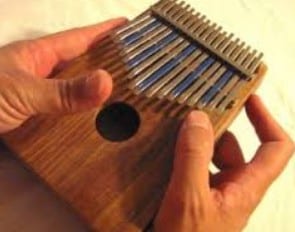
They're usually made of steel. In some kalimbas, the tines are curved downwards. This makes it easier for you to pluck.
Also, the tines may be staggered. This is an arrangement that ensures that your thumbs do not run into each other as you pluck away at the keys.
The Soundhole provides an inlet into the soundbox. When the sound comes out, it becomes more resonant and fuller. The soundholes at the back are for introducing vibrato in the music.
How are notes arranged on a Kalimba?
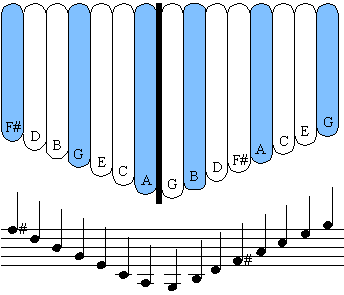
Most modern kalimbas have a common arrangement. 17 key kalimbas have two octaves.
The lowest note is located right in the middle of the arrangement. Most kalimbas that you will find today are tuned to the key of C, so the middle note is a C4.
Also, on one end is the D note and at the far end is E. From the first note on the left, the subsequent notes are arranged in a circle of fifths; D-B-G-E-C… up till E.
How to tune a Kalimba?
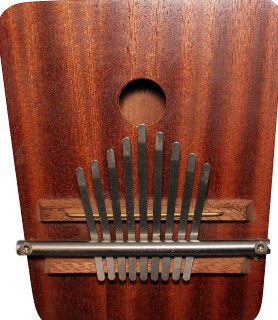
If your Kalimba gets out of tune, you can get it back in tune by adjusting the tine length.
To get a very accurate pitch, use a tuning application to confirm the notes. This kind of tuning is easier than changing the tuning key of the kalimba.
If you wish to play the kalimba in a different tuning, you'll have to change the pitch of the whole instrument.
Instead of fixing the individual tines, you may use the tuning hammer. Knocking the Z-bridge down a notch will drop the overall pitch of the Kalimba.
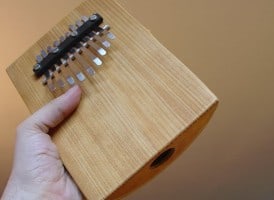
If you're doing this, please use a tuner to confirm that the new pitch is accurate. Changing the whole tuning key is not as easy as it sounds. It may take up to 30 minutes for beginners.
Conclusion
The kalimba is a good choice if you want to learn an instrument, it's inexpensive, easy to set up and you can learn it on your own.
It's also a good way to keep the (older) kids busy.


